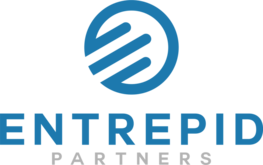Before you start selling a product, the number-one thing you need to do is understand your existing and prospective customers. After all, you want to be selling to companies that actually need and want your solution. So how do you go about understanding your customers’ needs?
The first step is to know who your ideal customers are and hone in on your target market. Your ideal customer profile uses patterns to describe a perfect customer’s industry, company size, buyer role and title, and specific relevant attributes. Meeting with prospects without engaging in sales conversations is a critical part of finding great potential customers. Not only will you figure out exactly what kinds of companies need your product most, you might also be able to line up companies to go back to once you’re ready to start sales. This discovery process is called customer development.
Let’s break down the customer development process to see how you can identify your ideal customers.
Step 1: Start with a hypothesis
First, come up with a thesis for your ideal customer profile. Throughout your meetings with prospects, you’ll either validate or disprove this idea. Your thesis should identify what you think is your key market, its leading and emerging companies, the buyer roles in these organizations, and your primary value prop, among other things (discussed in more detail in step two). You should also establish why you think your product is necessary for companies like these.
Step 2: Identify targets
If you already have customers, identify and list your best customers (by revenue and product fit) and collect the following information for each of them:
- Size (company, team, transactions)
- Industry
- Budget (available for your product)
- Location
- Year founded
- Previous solution/situation relevant to your product
- Decision makers (position and title)
- Challenges/pains that your product solves
- Timeline for making a decision
- Industry knowledge
- Other key tools
Look for trends and similarities among this information about your best customers. This will help you develop a profile for the kinds of new customers you should be targeting. For example, if 80 percent of your customers have less than 100 employees and large sales teams using Salesforce and Marketo, that might signal that you should target companies with similar profiles.
If you don’t have any customers yet, then you’ll want to identify targets within your preferred market and follow the next steps.
Step 3: Set up interviews
Unlike sales conversations, customer development interviews are purely for informational insight gathering. You want to engage in as many of these non-sales conversations as possible to get a feel for companies’ roles, goals, processes, and pain points.
Intros from your network are often effective for setting up these meetings, but a cold email works, too. Meet in person as much as possible, and be sure founders participate. Try recording conversations to share with the rest of the team. Pro tip: try offering an Amazon gift card or paying for calls on clarity.fm to accelerate the call booking process.
Step 4: Focus the conversation on the prospect
When it comes time to actually meet with a prospective customer, remember that this step of the process is about them—not your company, and especially not on selling. So keep the discussion of you and your company to a minimum; instead, start with questions about the prospect’s company and then dig into their specific role.
Things you want to be sure to learn about include:
- Pain points or challenges with their current process
- Organizational structures, which are key to understanding the company’s buying processes
- Goals
- Existing processes related to your product (e.g. if your product is in the HR space, you may want to ask about their processes related to employee onboarding)
This line of questions will help uncover pains your product may be able to relieve, but be sure not to start selling as soon as you hear pains, even if your product provides the perfect solution. This discovery process is important in its own right, and the time to sell will come later.
Also remember not to ask leading questions. You want to be sure to understand the company’s actual pain points and their urgency for solving them. Asking “If you had XYZ, would it make your life easier?” might not get you the information you need. Keeping your questions open-ended, like “What kinds of solutions do you think would make your life easier?” will get you where you need to go.
Step 5: Iterate
After you finish an interview, absorb the feedback, iterate on your hypothesis, and refine your questions. Then repeat the process as much as possible—we recommend meeting with 30+ companies. Record the data in a uniform way so you can analyze it all later.
Step 6: Build the ideal customer profile
Congratulations! You’re done with your discovery. Now how do you use all that information you’ve gathered to create the ideal customer profile?
Return to the information you collected about your top 25 percent customers in Step 2 and compare the trends you see there with the information you found during your discovery. List out the attributes that make up your ideal customer profile — the more specific the better. In the early days, it is better to be more focused than broad — e.g.,. a General Counsel at a brand name tech companies in SF, LA, NYC with 3+ members of the legal team, using cloud storage, and looking to improve process.
Then, find the prospects that match your ideal profile. If you didn’t have customers yet, try to identify trends among the information you collected from prospects that supports the hypothesis you had about what your ideal customer should look like.
Now you’re ready to start the sales process with potential customers that are likely to be a great fit!
